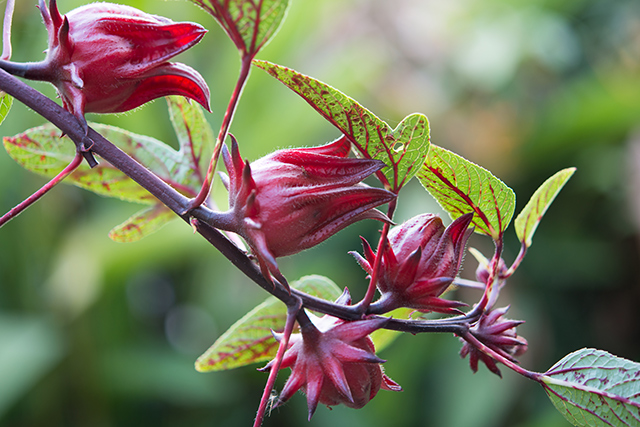
A team of researchers at Isfahan University of Medical Sciences in Isfahan, Iran examined the effects of roselle calyces on the serum levels of lipids and insulin, inflammation, and oxidative stress in patients with metabolic syndrome. Metabolic syndrome is a serious medical condition that occurs when a person has three or more of the following conditions: increased blood pressure, high blood sugar, excess body fat around the waist, and abnormal cholesterol, or triglyceride levels. It increases the risk of cardiovascular disease, diabetes, stroke, and diseases associated with fatty buildups in artery walls.
They enrolled 40 adult participants with metabolic syndrome and divided them into two groups: a treatment group and a placebo group. The treatment group received 500 mg of roselle calyx powder once a day for four weeks. On the other hand, the placebo group received placebo once daily for four weeks.
Before the treatment period, the research team measured the participants' systolic and diastolic blood pressures and body mass index (BMI), as well as their fasting serum levels of glucose, insulin, lipoproteins, triglycerides, high-sensitivity C-reactive protein, and malondialdehyde (MDA). They measured these variables again after the final treatment and compared the measurements to determine if there were significant changes.
The results of the study revealed that participants who took roselle daily experienced reductions in serum triglyceride levels and systolic blood pressure. However, roselle treatment did not have a significant effect on all other variables. These results suggested that roselle has antihypertensive effects.
Based on these findings, the researchers concluded that taking 500 mg of roselle calyx powder every day can lead to lowered systolic blood pressure and reduced serum triglyceride levels in people with metabolic syndrome.
More on roselle and its other health benefits
Roselle, also known as Florida cranberry, red sorrel, or Jamaica sorrel, is related to hibiscus and okra. It is native to Central and West Africa but is now grown in different parts of the world. The edible parts of the plant are the calyxes of the roselle flower which can be used to make jams, sauces, and teas. Roselle is also used for medicinal purposes for it is rich in nutrients, vitamins, and minerals. (Related: Hibiscus extracts can be used to provide natural food coloring WITH health benefits.)
Consuming 57 grams of roselle provides 123 mg of calcium, 0.84 mg of iron, 6.9 mg if vitamin C, 29 mg of magnesium, 6.45 g of carbohydrates, 21 mg of phosphorus, 119 mg of potassium, 0.016 mg of vitamin B2, and 8 mcg of vitamin A. Listed below are the health benefits roselle offers:
- Roselle keeps the teeth and gums healthy: Roselle contains calcium which keeps the jaw bone strong. The calcium content of roselle also helps prevent bacteria from thriving on your teeth.
- Roselle supports a healthy pregnancy: Roselle contains iron which is beneficial for pregnant women. Pregnant women need to eat more iron-rich foods because they need around 27 mg daily.
- Roselle treats the common cold: The vitamin C content of roselle helps strengthen the immune system. In turn, this prevents colds and coughs. Vitamin C also enhances iron absorption and thus strengthens the body's resistance to infection.
- Roselle supports digestive health: Roselle can prevent and treat constipation because of its magnesium content. Magnesium has a laxative effect which helps relax the intestinal muscles, establishing a smoother rhythm while passing bowels. It also has the ability to attract water, softening the stool and helping it to pass easily.
Read more news stories and studies on roselle and other natural medicines by going to NaturalMedicine.news.
Sources include:
GardeningSolutions.IFAS.UFL.edu
Please contact us for more information.























